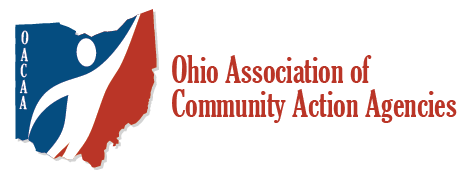Ohio’s Community Action Network serves every county in Ohio and reaches some of the most undercounted populations in every American census. Because of this, Community Action Agencies are expected to play a strong role in preparation for Census Day on April 1, 2020. When reviewing the list of twelve Hard to Count groups—including young children, immigrants, racial and ethnic minorities, people with disabilities, homeless, and others—all of them walk through our doors. To date, almost all of our member agencies have named point people for the census. And we, at OACAA, remain very involved.
The Governor has created the Census 2020 Complete Count Commission to oversee Ohio’s effort, and I was appointed one of the twenty-eight members. By December 1, 2019, the Commission will issue a report. The National Community Action Partnership has a group focused on the nine most important states—which includes Ohio. Pathway Executive Director Cheryl Grice is our representative to that group, and she is doing a fantastic job. Ohio also has the Ohio Census Advocacy Coalition on which I have asked our Communications Director, Kathryn Clausen, to serve. Kathryn represents us well.
As you know, the census has a great effect on all states, but specifically on our network and our programs. Money is appropriated to the states based on population. Simply put, the more people we count in Ohio, the more money we get. The more money we have, the more people Community Action can help.
In the 2020 Census, Ohio is assumed to lose at least one Congressional District. If we undercount, we could lose two. A vigorous effort to count everyone could help us retain the status quo.
The districts of the Ohio General Assembly are affected, too. While there will continue to be thirty-three Senate Districts and ninety-nine House Districts, where they are will be determined by the placement of the population. Only five counties in Ohio are growing faster than the national average. Four are in Central Ohio—Franklin, Delaware, Union, and Fairfield—and the other is Warren County. Because of the booming population, those areas will add seats—but that means other areas will lose districts. Joining local census efforts can help your communities count everyone to push to make sure it is not your area.
During our 2020 Winter Legislative Conference, we will hold workshops to help our network be the best players in the census effort. Workshops will be taught by experts in the field, including one by consultants working with the Partnership, who will discuss plans in other states. You should be able to gather some good ideas from them.
I encourage you to get out and speak to groups in your area about the census, and if you prefer, I would be happy to speak in your area. Learning how others in your community plan to approach people can also lead to new partnerships that can evolve into other areas later. Many local businesses, nonprofits, and other organizations are involved in your local census committees, which is greatly appreciated. If you’re in a county without a census committee, feel free to start one. If you need help getting started, I will be happy to help you.
The most important pieces for people to know about the 2020 Census is: it is safe, it is easy, and it is important. The census contains a few simple questions. The answers and all information remains confidential for seventy-two years. That is federal law.
If you have any questions, contact me.
